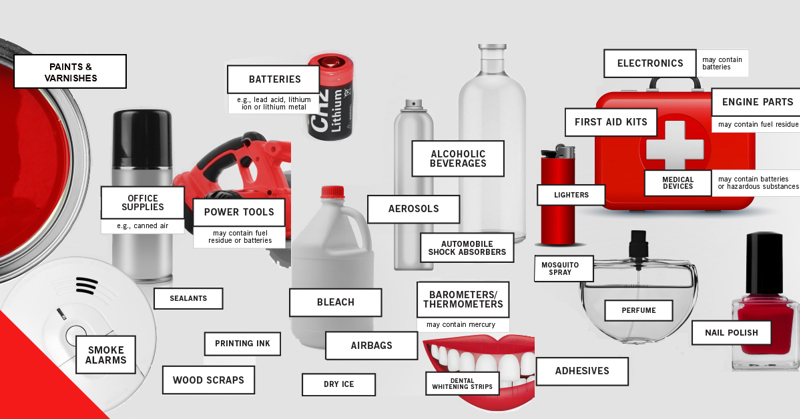By Mike Brown
Labelmaster
When you hear the word “hazmat,” you probably picture people in yellow bodysuits cleaning up after some horrific industrial accident.
That’s not what it’s about.
“Hazmat” is short for “hazardous material,” also known as dangerous goods. The terms refer to any material for which a government body regulates handling and transport. Gasoline is hazmat. Many paints are hazmats. The lithium batteries that power your cell phones and laptops are hazmats.
Here’s the point: Many of the items going in and out of a warehouse on any given day are regulated hazmat. They need to be labeled and documented in compliance with federal (and sometimes international) regulations.
And if they’re not? Stopped shipments. Angry customers. Steep fines. Or worst case scenario, people in yellow bodysuits.
Here’s what you and your customers need to know about hazmat:
- You’re probably shipping hazmat. Not all dangerous goods sound especially dangerous. Hand sanitizer? Nail polish? Believe it or not, the lithium batteries in most modern devices are among the most heavily regulated items you can ship. In fact, phones and laptops aren’t just hazmats—they’re the hazmattiest hazmat in the hazmativerse.
- Hazmat transport can be expensive. When you ship things classified as flammable, poisonous or corrosive, your packaging needs to be of a stouter, more costly variety. Plus, carriers may charge you more, because they can.
- Hazmat incidents are even more expensive. Stopped shipments cost you money. Civil penalties cost you money. And what’s your corporate reputation worth? The last thing you want is that call that goes, “Hey, there’s a news crew in the lobby, and they want to talk to you.”
- Hazmat isn’t rocket science. It is, though, necessary to have your people properly trained to understand how to handle hazmat. It’s basic blocking and tackling — picking the right type of packaging, the right type of insulation, the right label, the right placard, etc.
- Hazmat regulations change all the time. New year? New rules. New data? New rules. Shipping into a different country, or by a different mode of transport? New rules. The volatility and complexity of hazmat regulations is one reason why.
- Hazmat regulations are about public safety. Complying with hazmat regulations can be frustrating, bewildering and expensive. But the rules aren’t created to annoy you, they’re enacted to protect the public from fires, plane crashes and those people-in-yellow-bodysuits scenarios.
Now that you know the basics about hazmat, you’ll be happy to know that Pierbridge has teamed up with Labelmaster — the leading provider of technology for compliant hazmat transport — to integrate Labelmaster’s Dangerous Goods Information System (DGIS) with Pierbridge’s Transtream parcel transportation management system (TMS).
The combined solution helps Transtream users streamline the hazmat shipping process while they ensure compliance with the latest regulations.
In other words ... the word “hazmat” doesn’t have to be scary.
